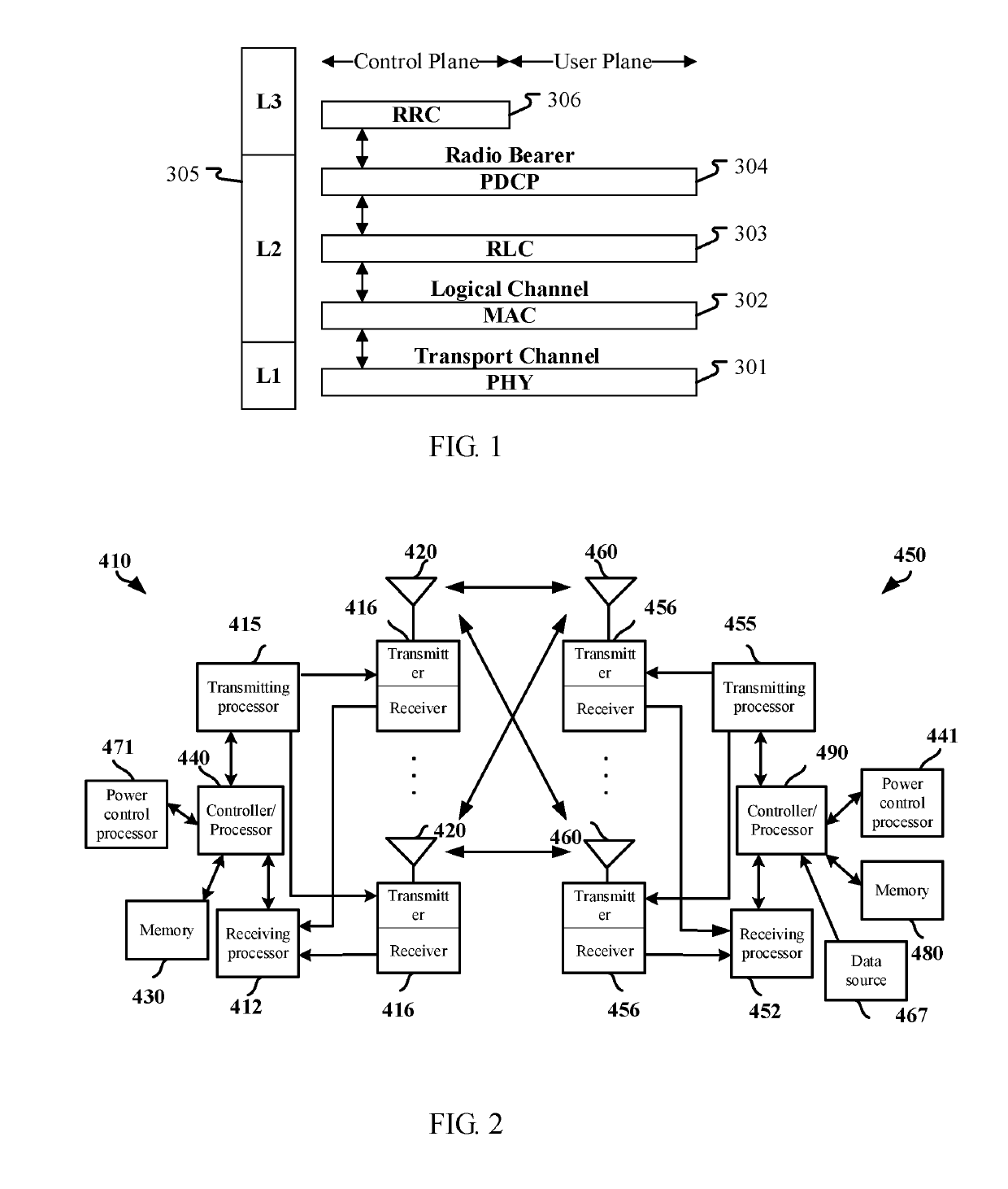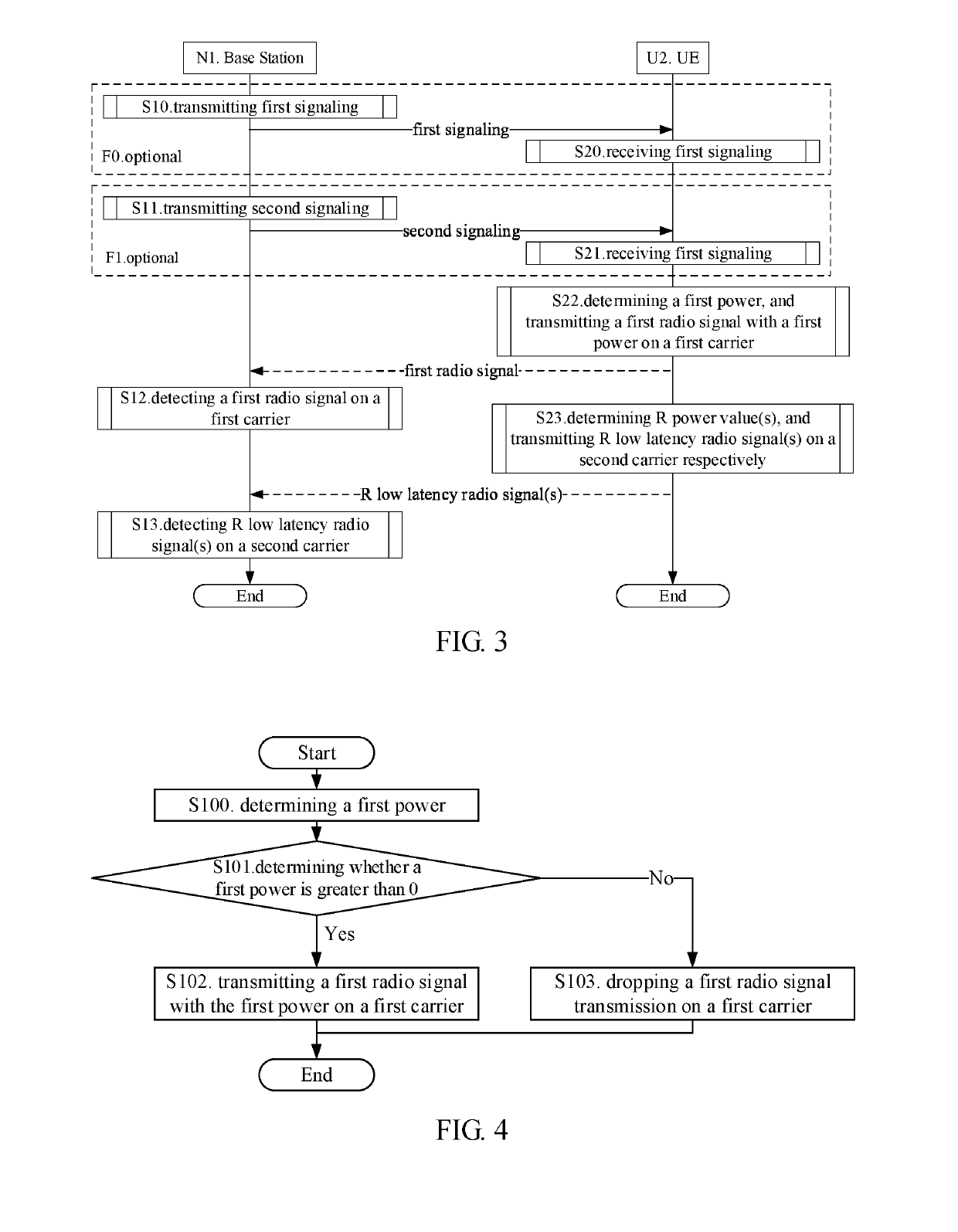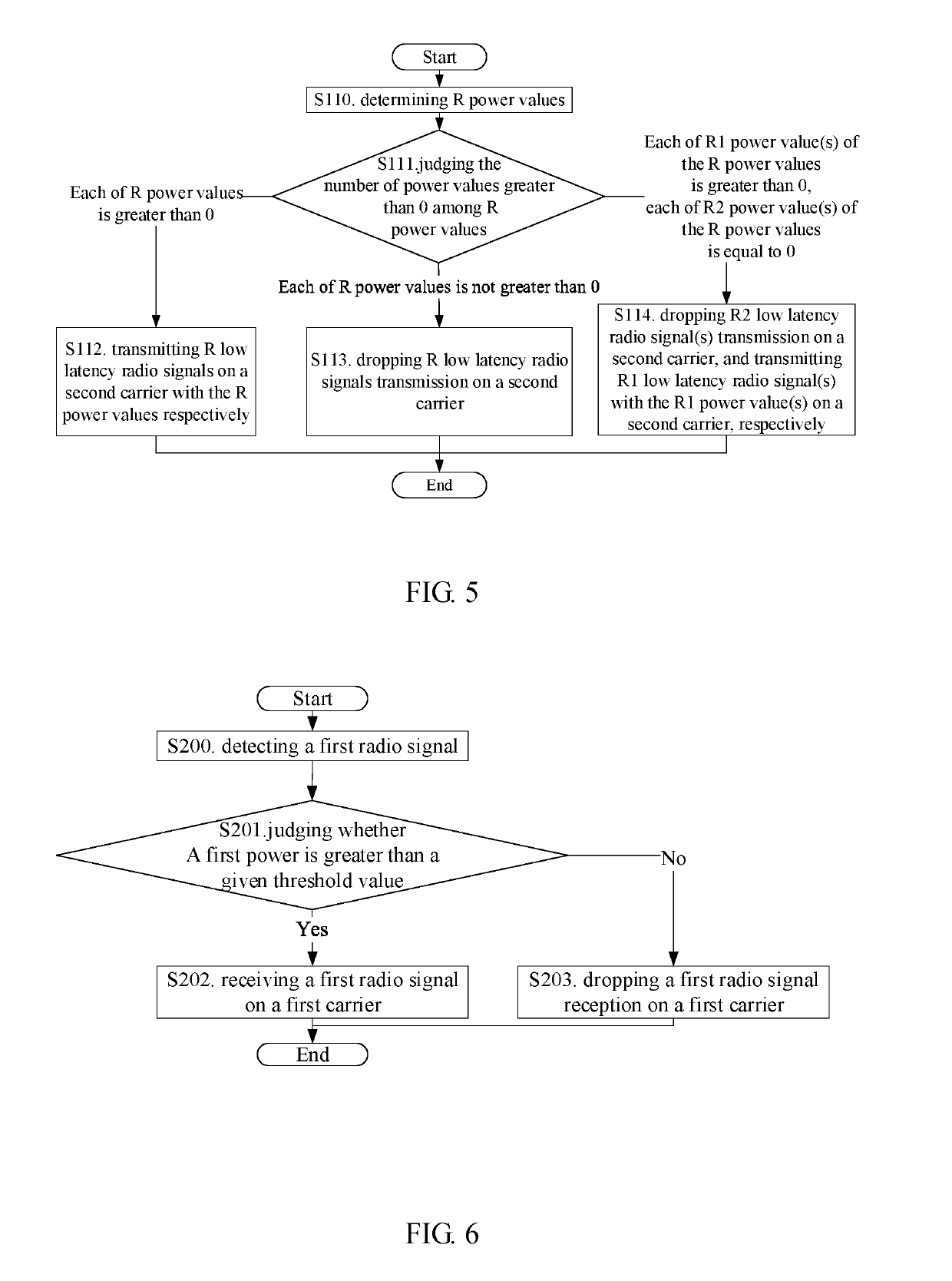Method and device in ue and base station used for low latency communication
a low-latency communication and base station technology, applied in the field of radio signal transmission schemes, can solve the problems of reducing the transmission power affecting the performance of an uplink control channel, and power selection used for long stti transmission via a traditional power scaling method
- Summary
- Abstract
- Description
- Claims
- Application Information
AI Technical Summary
Benefits of technology
Problems solved by technology
Method used
Image
Examples
embodiment 1
[0262]Embodiment 1 illustrates a schematic diagram of a radio protocol architecture of a user plane and a control plane according to the present disclosure, as shown in FIG. 1. FIG. 1 illustrates a schematic diagram of a radio protocol architecture of a user plane and a control plane. In FIG. 1, the radio protocol architecture of user equipment (UE) and Base Station Equipment (gNB or eNB) is represented by three layers, which are a layer 1, a layer 2 and a layer 3 respectively. The layer 1 (L1) 301 is the lowest layer and performs signal processing functions of each PHY layer. The layer 1 is called PHY 301 in this paper. The layer 2 (L2) 305 is above the PHY 301, and is in charge of the link between the UE and the gNB via the PHY 301. In the user plane, the L2 305 comprises a Medium Access Control (MAC) sublayer 302, a Radio Link Control (RLC) sublayer 303, and a Packet Data Convergence Protocol (PDCP) sublayer 304. All the three sublayers terminate at the gNB of the network side. A...
embodiment 2
[1] Embodiment 2
[0268]Embodiment 2 is a diagram illustrating a base station equipment and a given UE according to one embodiment of the present disclosure, as FIG. 2 shown. FIG. 2 is a diagram of gNB410 between access network and UE450.
[0269]Base station (410) comprises controller / processor 440, memory 430, receiving processor 412, transmitting processor 415, power control processor 471, transmitter / receiver 416 and antenna 420.
[0270]User equipment (UE450) comprises controller / processor 490, memory 480, data source 467, transmitting processor 455, receiving processor 452, power control processor 441, transmitter / receiver 456 and antenna 460.
[0271]In downlink transmission, a processing associated with a base station device (410) comprising:
[0272]Upper layer packet arrives at controller / processor 440, controller / processor 440 provides packet head compression, encryption, packet segmented connection, reordering and multiplexing demultiplexing between logic and transport channels, to im...
embodiment 3
[0310]Embodiment 3 illustrates a flow chart of transmission of the first radio signal according to one of the present disclosures, as FIG. 3 shown. In FIG. 3, base station N1 is a maintenance base station of a serving cell of UE U2. Wherein steps identified in block F0 and block F1 are optional.
[0311]For base station N1, transmitting a first signaling in step S10; transmitting a second signaling in step S11; detecting a first radio signal on a first carrier in step S12; detecting R radio signal(s) on a second carrier in step S13.
[0312]For UE U2, receiving a first signaling in step S20; receiving a second signaling in step S21; determining a first power in step S22, and transmitting a first radio signal with a first power on a first carrier; determining R power value(s) in step S23; and transmitting R low latency radio signal(s) with R power value(s) on a second carrier respectively.
[0313]In embodiment 3, the first radio signal carries at least one of a first bit block and a first up...
PUM
 Login to View More
Login to View More Abstract
Description
Claims
Application Information
 Login to View More
Login to View More - R&D
- Intellectual Property
- Life Sciences
- Materials
- Tech Scout
- Unparalleled Data Quality
- Higher Quality Content
- 60% Fewer Hallucinations
Browse by: Latest US Patents, China's latest patents, Technical Efficacy Thesaurus, Application Domain, Technology Topic, Popular Technical Reports.
© 2025 PatSnap. All rights reserved.Legal|Privacy policy|Modern Slavery Act Transparency Statement|Sitemap|About US| Contact US: help@patsnap.com



